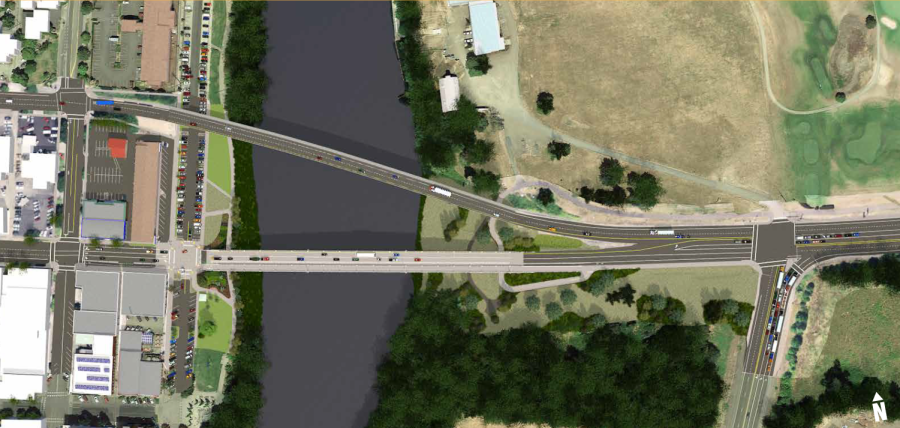Van Buren Bridge construction plans to have minimal impact on commutes
May 4, 2023
The historic Van Buren Bridge in Corvallis is going to begin reconstruction this summer, with efforts made to impact traffic as little as possible.
Since its initial construction in 1913, the steel bridge has had several disadvantages. The steel frame is no longer considered stable for seismic activity, according to the Oregon Department of Transportation website. Additionally, it cannot support heavier vehicles, including public commuting buses.
Finally, the bridge’s single lane design can throttle traffic. With this being a major eastbound thoroughfare across the Willamette river, it comes up short in comparison to the Harrison Bridge, just north of it.
David House, public information officer with the Oregon Department of Transportation, said the need to replace the bridge has been around for decades. According to House, ODOT needs to replace this bridge, and many others across the state, because they’ve reached the end of their lifespans.
“The design is only meant to last 50, 60, 70 years. The Van Buren bridge has lasted 110 years,” House said.
According to data from the Oregon State University Transportation Services, approximately 21.7% of student trips to campus were done by driving, 3.6% by carpooling and an additional 6.3% on public transit.
Harrison Cordle, an OSU student who takes public transit between OSU and Albany, mentioned that the Heart to Hub route is one of the more reliable routes in Albany’s public transportation system.
Cordle had criticisms regarding the current route’s variability, and lack of clarity. He said that the system’s lack of communication when the bus is running early can lead to commute times ballooning up to an hour, from a typical 20 minutes.
The first stage of construction is to construct a temporary detour bridge, north of the Van Buren bridge. While this bridge is being constructed, pedestrian and bike paths nearby will be shut down temporarily, according to the ODOT website.
This first stage of construction is planned to have the largest impact on commuting. The detour bridge will function similarly to how the Van Buren bridge functions today, a single lane open to vehicular traffic east across the river.
Once the bridge is complete — currently slated for the end of 2026 — it will feature two lanes, and be accessible to transit vehicles such as buses, according to the ODOT website. For a transit system like the Heart to Hub route, this could cut a few minutes of travel time, as there will no longer need to be a detour to circumvent the river.
“When we look at replacing old bridges, especially ones that are this old, there is a historic preservation process,” House said. “It’s guided by federal laws … essentially, ODOT is not, under Oregon constitution or funding, … set up to do historic preservation.”
Currently, there is no public plan on what will happen to the old Van Buren bridge post deconstruction. The ODOT website cites some potential projects, such as OSU creating an archived 3D model of the bridge, or saving certain pieces of the bridge for exhibitions.
“This is a really important link in the community, it’s a link across the river,” House said. “Westbound, we have a two lane bridge … but eastbound we need an equal capacity for the community. It’s not a major freight route, but it is a real important link in that part of the valley, and for local residents.”










































































































